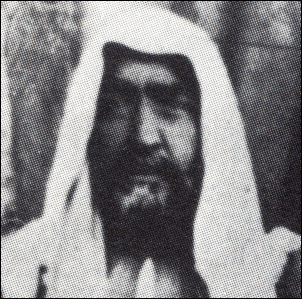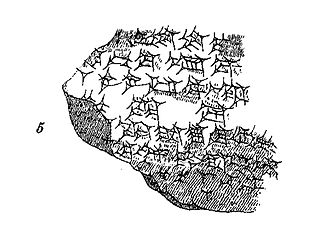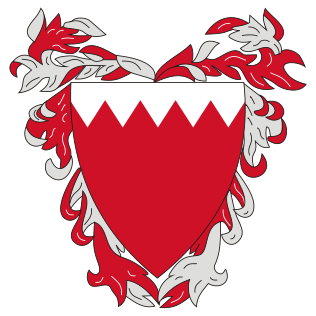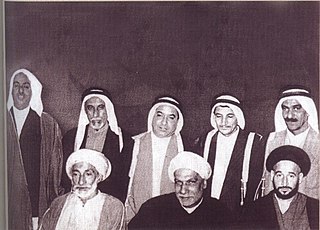 W
WAbu Tahir Sulayman al-Jannabi was an Iranian warlord and the ruler of the Qarmatian state in Bahrayn, who in 930 led the sacking of Mecca.
 W
WAli Abdulla Al-Ubaydli was a merchant, philanthropist and pioneer in Bahrain. At the turn of the 20th century, he was behind building the first modern port in Bahrain which was an important step in modernising the country. He also took part in the first attempt to supply the capital city with fresh water. The two wells he built gave water to local residents and to Bahrain's pearl divers.
 W
WAwal is an ancient name of Bahrain, an island country in the Persian Gulf. The name Awal had remained in use, probably for eight centuries. Awal Premi was derived from the name of a god that used to be worshiped by the inhabitants of the islands before the advent of Islam. Awal resembled the head of an ox. As for the meaning of this name, there are ʼawwal 'first, first part, previous'; ʼawwalan 'firstly, at first'; ʼawwalī 'prime, primordial, original'.
 W
WThe Banu Abdul Qays is an ancient Arabian tribe from the Rabi`ah branch of the North Arabian tribes. In pre-Islamic times, the Abd al-Qays frequently raided Iran. When he became of age, Shapur II made it his first order of business to punish the Abd al-Qays. He led an army across the Persian Gulf and devastated large parts of Eastern Arabia and Syria, slaughtering most of the Abd al-Qays on the way. Later in his reign, Shapur moved many Abd al-Qays people to Kirman in Iran.
 W
WDuarte Barbosa was a Portuguese writer and officer from Portuguese India. He was a scrivener in a factory in Cannanore, and an interpreter of the local language, Malayalam. Barbosa wrote the Book of Duarte Barbosa c. 1516, making it one of the earliest examples of Portuguese travel literature. In 1519, Barbosa embarked on the first expedition to circumnavigate the world, led by his brother-in-law Ferdinand Magellan. He died in 1521 at the Battle of Mactan on Cebu Island in the Philippines.
 W
WDilmun, or Telmun, was an ancient Semitic-speaking polity in Arabia mentioned from the 3rd millennium BC onwards. Based on textual evidence, it was located in the Persian Gulf, on a trade route between Mesopotamia and the Indus Valley Civilisation, close to the sea and to artesian springs. A number of scholars have suggested that Dilmun originally designated the eastern province of Saudi Arabia, notably linked with the major Dilmunite settlements of Umm an-Nussi and Umm ar-Ramadh in the interior and Tarout on the coast. Dilmun encompassed Bahrain, Kuwait, Qatar and the eastern portion regions of Saudi Arabia. This area is certainly what is meant by references to "Dilmun" among the lands conquered by King Sargon of Akkad and his descendants.
 W
WThe Diraz Temple is located on the side of Budaiya Highway, in the village of Diraz in Bahrain. No concrete evidence has been found to determine which god(s) the temple was dedicated for.
 W
WThe Durand Stone is an artifact in Bahrain dating back to the Kassite period. Named after Captain Edward Law Durand who had first identified it, the stone is a 25–30 cm wide and 70–80 cm long black basalt sculpture in the shape of a prow of a boat or an animal's tongue, with a cuneiform inscription.
 W
WBahrain was formerly split into twelve regions (mintaqah) that were all administered from the capital city of Manama. On July 3, 2002, these were superseded by the five Governorates of Bahrain.Al Hadd Al Manamah Al Mintaqah al Gharbiyah (Western) Al Mintaqah al Wusta (Central) Al Mintaqah al Shamaliyah (Northern) Al Muharraq Ar Rifa' wa al Mintaqah al Janubiyah Jidd Haffs Madinat Hamad Madinat 'Isa Juzur Hawar Sitrah
 W
WThe University of Bahrain is the largest public university in the Kingdom of Bahrain with campuses in Sakhir, Isa Town and Manama, the university has more than 20,000 registered students and over 2000 staff members.
 W
WThe History of Bahrain (1783–1971) covers the history of Bahrain since the invasion of Al Khalifa until the independence from the British Empire.
 W
WHyspaosines was an Iranian prince, and the founder of Characene, a kingdom situated in southern Mesopotamia. He was originally a Seleucid satrap installed by king Antiochus IV Epiphanes, but declared independence in 141 BC after collapse of Seleucid authority in Iran and Babylonia to the Parthians. Hyspaosines briefly occupied the Parthian city of Babylon in 127 BC, where he is recorded in records as king (šarru). In 124 BC, however, he was forced to acknowledge Parthian suzerainty. He died in the same year, and was succeeded by his juvenile son Apodakos.
 W
WIlī-ippašra, inscribed DINGIRmeš-ip-pa-aš-ra, and meaning "My god(s) became reconciled with me", was a Babylonian who may have been adopted or apprenticed during the reign of Kassite king Kurigalzu I, ending ca. 1375 BC, and rose to become an official, possibly the governor of Dilmun, Failaka, Kuwait and ancient Bahrain, during the later reign of Burna-Buriaš II, ca. 1359-1333 BC. He may have been a successor for Usi-ana-nuri-?, the viceroy of Dilmun who was attested in the cylinder seal of his grandson, Uballissu-Marduk.
 W
WIsa ibn Ali Al Khalifa was the ruler of Bahrain from 1869 until his death. His title was Hakim of Bahrain. He is one of the longest reigning monarchs of the region, a reign lasting 63 years. He was forced by the British political advisor to abdicate in 1923, although this "abdication" was never recognised by Bahrainis who considered his successor Hamad only as a viceruler until Isa's death in 1932.
 W
WThe Jabrids or Banu Jabr were a dynasty that dominated eastern Arabia in the 15th and 16th centuries. They belonged to the tribe of Bani Khalid.
 W
WThe King of the Kingdom of Bahrain is the monarch and head of state of Bahrain. Between 1783 and 1971, the Bahraini monarch held the title of Hakim, and, from 1971 until 2002, the title of Emir. On 14 February 2002, the then-Emir of Bahrain, Hamad bin Isa Al Khalifa, declared Bahrain a kingdom and proclaimed himself the first king.
 W
WThe National Liberation Front—Bahrain is a clandestine Marxist party in Bahrain. It was founded on 15 February 1955, the first leftist party in the Arab states of the Persian Gulf. Among the founder-members were Hassan Nezam (1922–1958), the principal founder, who was killed in Tehran in 1958 by SAVAK. Other founders were Erik Mansoorian, who died in Abadan after returning to Iran in 1964, Hassan M. Saleh (1926–2000), who from the early 1960s was in a state of a chronic mental dysfunction as a result of severe torture, Ali Madan (1932–1995), Ahmed al-Thawadi, “Saif Bin Ali” (1937–2006), and Ali Dawaigher (1938-2013).
 W
WThe National Union Committee was a nationalist reformist political organization formed in Bahrain in 1954. The committee was formed by reformists in response to sectarian clashes between Sunni and Shia members of the population. The original aims were to push for an elected popular assembly, a codified system of civil and criminal law, the establishment of an appellate court, the right to form trade unions, an end to British colonial influence, and an end to sectarianism.
 W
WThe Persian Gulf Residency was an official colonial subdivision of the British Raj from 1763 until 1947, whereby the United Kingdom maintained varying degrees of political and economic control over several states in the Persian Gulf, including what is today known as the United Arab Emirates and at various times southern portions of Persia, Bahrain, Kuwait, Oman, and Qatar.
 W
WThe Qarmatians were a syncretic branch of Sevener Ismaili Shia Islam. They were centred in al-Hasa, where they established a religious-utopian republic in 899 CE. They are most known for their revolt against the Abbasid Caliphate.
 W
WThe Siege of Bahrain of 1559 occurred when forces of the Ottoman Empire, commanded by the governor of the Lahsa eyalet Mustafa Pasha, attempted to seize Bahrain, and thus wrest control of the island and its famed pearl trade from the Portuguese Empire. The siege was unsuccessful, and the Portuguese defeated the Turks when reinforcements were dispatched by sea from the fortress of Hormuz.
 W
WSiyadi House, also known as Bayt Siyadi is a historic building in Muharraq City, Kingdom of Bahrain. It is part of a larger complex of buildings constructed for the pearl merchant Abdullah bin Isa Siyadi, which further includes a mosque and a majlis. While the Siyadi House was built under Ahmad bin Jassim Siyadi, the construction of the Siyadi Majlis was initiated by Ahmad bin Jassim Siyadi and the Siyadi Mosque was a shared initiative of Isa and Jassim bin Ahmad Siyadi. It is also a part of the Bahrain pearling trail, the second UNESCO World Heritage Site in the country.
 W
WTylos was the name used by the Greeks to refer to Bahrain, as the centre of pearl trading, when Nearchus came to discover it serving under Alexander the Great. From the 6th to 3rd century BC Bahrain was included in the Persian Empire by the Achaemenids, an Iranian dynasty. The Greek admiral Nearchus is believed to have been the first of Alexander's commanders to visit the island, and he found a verdant land that was part of a wide trading network; he recorded: "That in the island of Tylos, situated in the Persian Gulf, are large plantations of cotton tree, from which are manufactured clothes called sindones, a very different degrees of value, some being costly, others less expensive. The use of these is not confined to India, but extends to Arabia." The Greek historian, Theophrastus, states that much of the islands were covered in these cotton trees and that Tylos was famous for exporting walking canes engraved with emblems that were customarily carried in Babylon. Ares was also worshipped by the country's indigenous and Greek population.
 W
WThe University of Bahrain is the largest public university in the Kingdom of Bahrain with campuses in Sakhir, Isa Town and Manama, the university has more than 20,000 registered students and over 2000 staff members.
 W
WThe Uyunid Emirate, Uyunid Kingdom or Uyunid State, was founded by Abdullah bin Ali Al Uyuni in 1076-1077. The tribe seized the country from the Qarmatians with the military assistance of the Great Seljuq Empire in 1077-1078 AD. The country mainly consisted of the region of Bahrain in the east of the Arabian Peninsula.